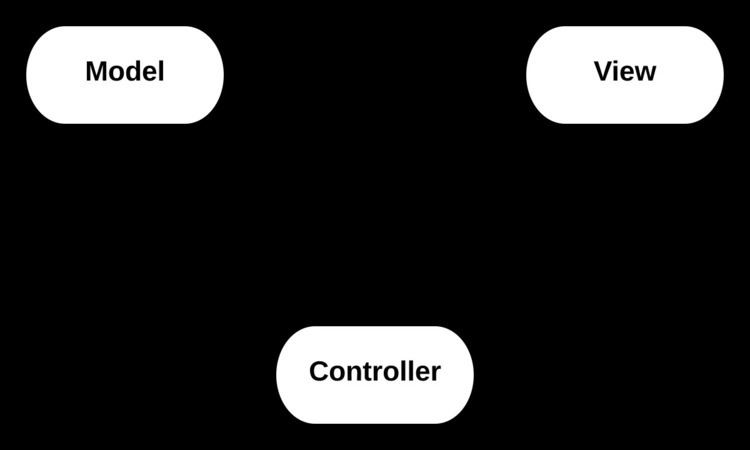 | ||
Model–View–Controller (MVC) is a software architectural pattern for implementing user interfaces on computers. It divides a given application into three interconnected parts in order to separate internal representations of information from the ways that information is presented to and accepted from the user. The MVC design pattern decouples these major components allowing for efficient code reuse and parallel development.
Contents
- Description
- Components
- Interactions
- History
- Use in web applications
- Simultaneous development
- Code reuse
- Advantages
- Disadvantages
- References
Traditionally used for desktop graphical user interfaces (GUIs), this architecture has become popular for designing web applications and even mobile, desktop and other clients. Popular programming languages like Java, C#, Ruby, PHP and others have popular MVC frameworks that are currently being used in web application development straight out of the box.
Description
As with other software architectures, MVC expresses the "core of the solution" to a problem while allowing it to be adapted for each system. Particular MVC architectures can vary significantly from the traditional description here.
Components
Interactions
In addition to dividing the application into three kinds of components, the model–view–controller design defines the interactions between them.
History
One of the seminal insights in the early development of graphical user interfaces, MVC became one of the first approaches to describe and implement software constructs in terms of their responsibilities.
Trygve Reenskaug introduced MVC into Smalltalk-76 while visiting the Xerox Palo Alto Research Center (PARC) in the 1970s. In the 1980s, Jim Althoff and others implemented a version of MVC for the Smalltalk-80 class library. Only later did a 1988 article in The Journal of Object Technology (JOT) express MVC as a general concept.
The MVC pattern has subsequently evolved, giving rise to variants such as hierarchical model–view–controller (HMVC), model–view–adapter (MVA), model–view–presenter (MVP), model–view–viewmodel (MVVM), and others that adapted MVC to different contexts.
The use of the MVC pattern in web applications exploded in popularity after the introduction of Apple's WebObjects in 1996, which was originally written in Objective-C (that borrowed heavily from Smalltalk) and helped enforce MVC principles. Later, the MVC pattern became popular with Java developers when WebObjects was ported to Java. Later frameworks for Java, such as Spring (released in October 2002), continued the strong bond between Java and MVC. The introduction of the frameworks and Django (July 2005, for Python) and Rails (December 2005, for Ruby), both of which had a strong emphasis on rapid deployment, increased MVC's popularity outside the traditional enterprise environment in which it has long been popular. MVC web frameworks now hold large market-shares relative to non-MVC web toolkits.
Use in web applications
Although originally developed for desktop computing, MVC has been widely adopted as an architecture for World Wide Web applications in major programming languages. Several commercial and noncommercial web frameworks have been created that enforce the pattern. These software frameworks vary in their interpretations, mainly in the way that the MVC responsibilities are divided between the client and server.
Early web MVC frameworks took a thin client approach that placed almost the entire model, view and controller logic on the server. This is still reflected in popular frameworks such as Django, Rails and ASP.NET MVC. In this approach, the client sends either hyperlink requests or form input to the controller and then receives a complete and updated web page (or other document) from the view; the model exists entirely on the server. As client technologies have matured, frameworks such as AngularJS, EmberJS, JavaScriptMVC and Backbone have been created that allow the MVC components to execute partly on the client (also see Ajax).
Simultaneous development
Because MVC decouples the various components of an application, developers are able to work in parallel on different components without impacting and/or blocking one another. For example, a team might divide their developers between the front-end and the back-end. The back-end developers can design the structure of the data and how the user interacts with it without requiring the user interface to be completed. Conversely, the front-end developers are able to design and test the layout of the application prior to the data structure being available.
Code reuse
By creating components that are independent of one another, developers are able to reuse components quickly and easily in other applications. The same (or similar) view for one application can be refactored for another application with different data because the view is simply handling how the data is being displayed to the user.
